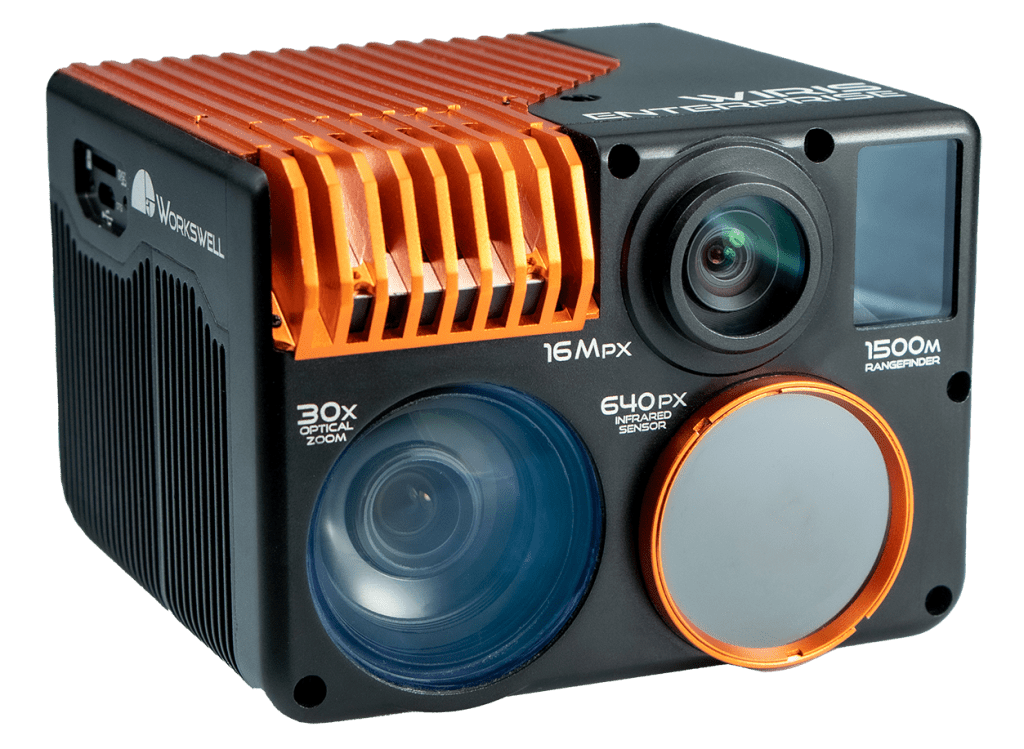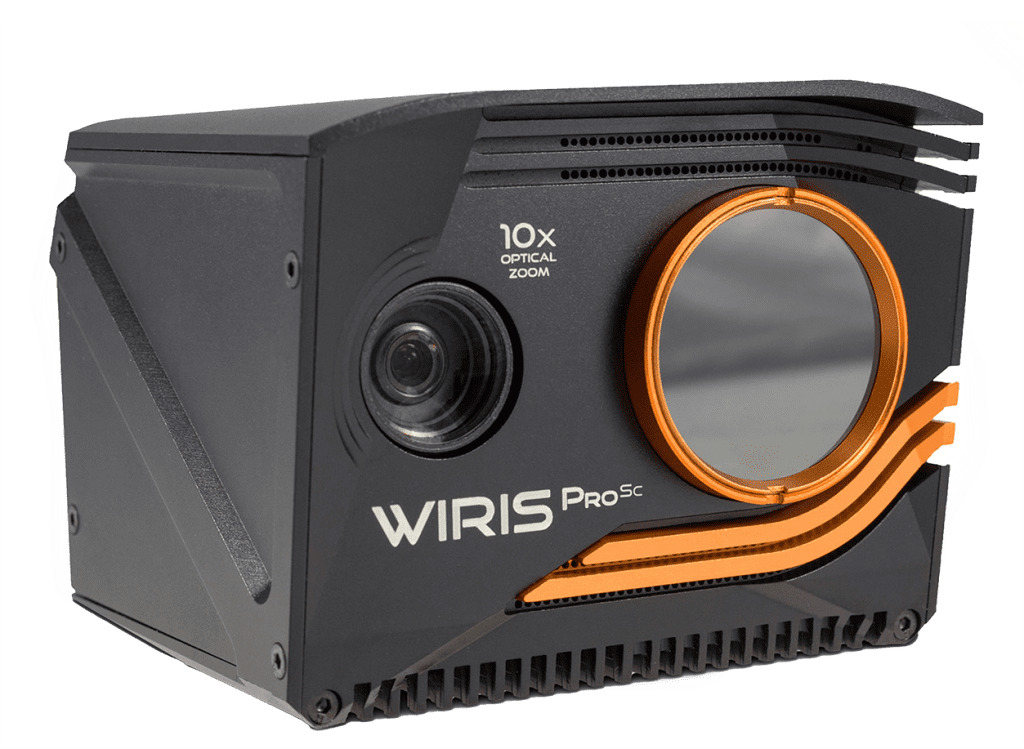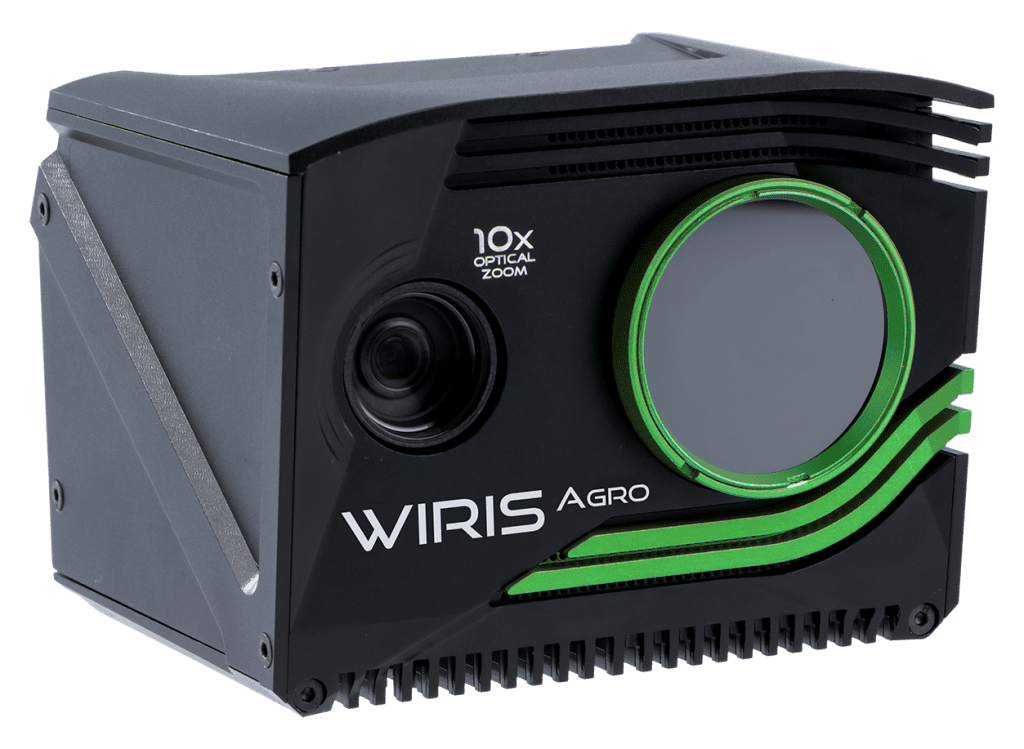Precise Thermographic Building Diagnostics
When thermography emerged as a field in the middle of the last century, thermographic building diagnostic served as one of its first commercial applications.
Even with the limited technologies of the 1960s, thermal cameras could discover a range of construction defects that are invisible to the naked eye. Today’s thermodiagnostic systems build on those early innovations to provide insight into thermal bridges, water leaks, and faulty insulation before buildings begin to degrade.
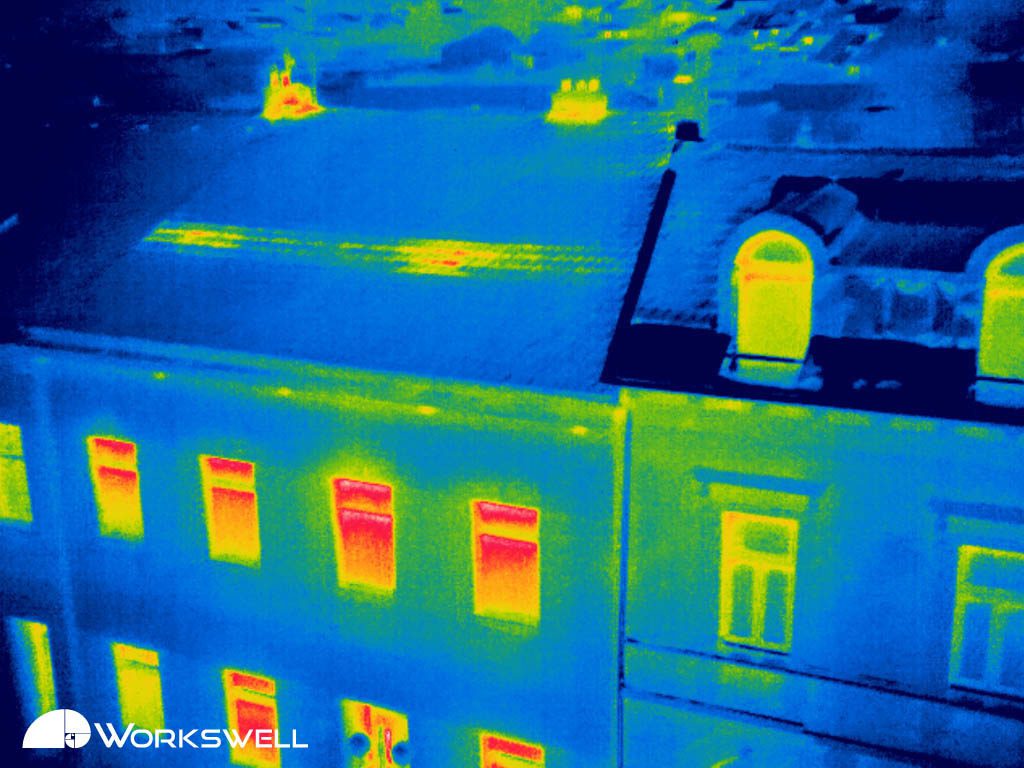
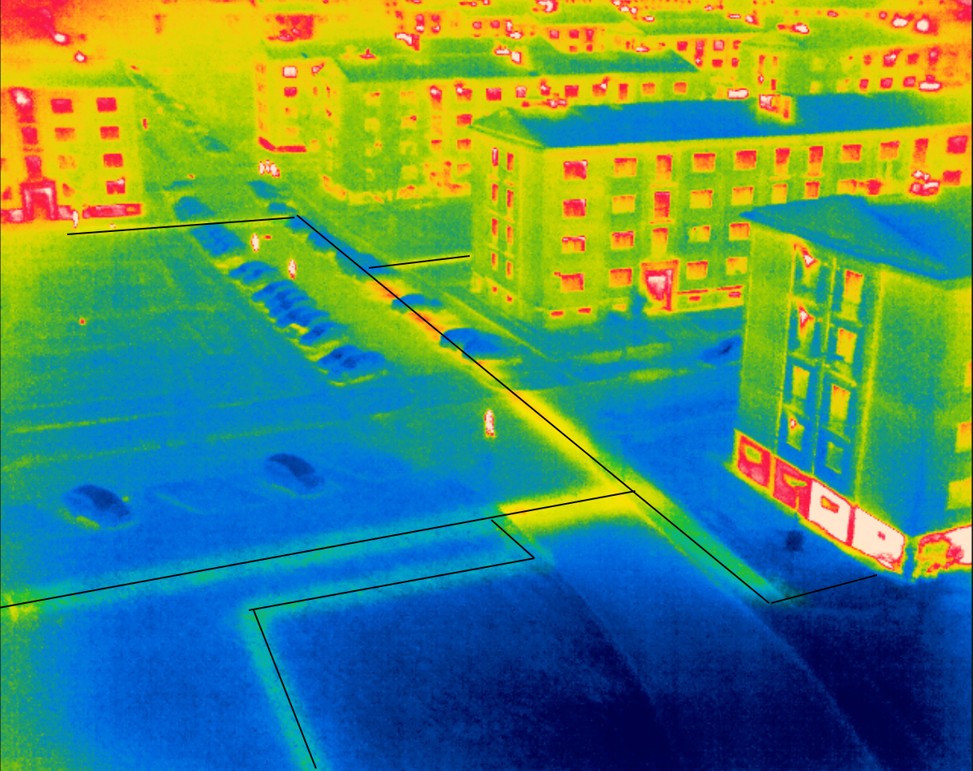
Why thermography?
The persistent growth of energy prices has created a need for buildings with enhanced heat insulation. Thermographic building diagnostics is the ideal way to identify defects that reduce the efficacy of insulation, such as thermal bridges.
Practice shows that suppliers do not always produce work of the highest quality – in fact, it is not uncommon for clients to feel cheated by contractors. Shoddy construction work can cause redundant energy losses, mold, and other problems. Thermal cameras facilitate the detailed inspection of a wide range of structures by illuminating phenomena that are invisible to the naked eye.
Thermographic inspections uncover errors and produce professional measurements to precisely localize defects. Clients can expect to receive a readout which can be used for successful negotiations with a negligent supplier.
Setup with drone
Conditions
If thermodiagnostic work is to be helpful, the difference between the interior and exterior must be at least 10°C. Furthermore, measurements cannot proceed during heavy rain or snow. Unsurprisingly, the most suitable time for measurement is autumn and winter.
Why use Drones?
Until recently, manual devices were used during thermographic building inspections. Even today, they are ideal for measuring interiors. However, it can be extremely difficult to map the entire exterior of a building with a manual approach. It is often unsafe to inspect construction quality manually, especially in the case of tall structures or family houses whose roofs are not easily accessible.
Advantages of Workswell WIRIS?
The precise surface temperature of a defect must be known if it is to be diagnosed and repaired correctly. It is thus critical that the thermal camera used for inspections be calibrated to the task at hand. Here at Workswell, we keep this necessity in mind and manually calibrate each and every WIRIS thermal camera system we deliver.
That way, the camera’s declared precision is ensured. On delivery, each of our systems also includes a calibration certificate confirming the declared precision. The camera’s emissivity and reflected temperature can be changed mid-flight, but more importantly, the user can correct the WIRIS‘ temperature range setting as well. This is very important when searching for defects, as users can select which image will be produced without landing.
Another important advantage of the WIRIS thermal camera is that a traditional photo is produced for each thermal image. This is necessary because it is difficult to identify the individual components of a large construction from a thermal image alone. Furthermore, inspection data must be processed into the measurement report to accompany building photographs.
Therefore, the Workswell WIRIS stores all its radiometric data, and it enables the production of a measuring report which confirms the measurement’s conclusion and can be used in a claim. Moreover, Workswell’s WIRIS IR camera can be fully controlled by the standard RC control unit that already controls your drone.
GPS advantages
Another key feature of the WIRIS system is that GPS coordinates can be stored to each saved image. This is important because many inspections are carried out on massive buildings that extend over a large area. If the thermogram is to aid in maintenance efforts, it must be possible to determine where to send technicians for the additional analysis of suspicious components.
After measurements are carried out, it must also be possible to produce a detailed report on any detected problems. That’s why the Workswell CorePlayer software facilitates the creation of detailed measurement reports. An additional important function is the ability to manually adjust the temperature range.
Without this capability, one cannot determine the meaning of individual colors in the thermogram, and you cannot be sure whether the panel detected a high temperature increase which indicates a problem, or a minor deviation. Practice shows that this function can decrease thermographic building diagnostic time by up to ten times!
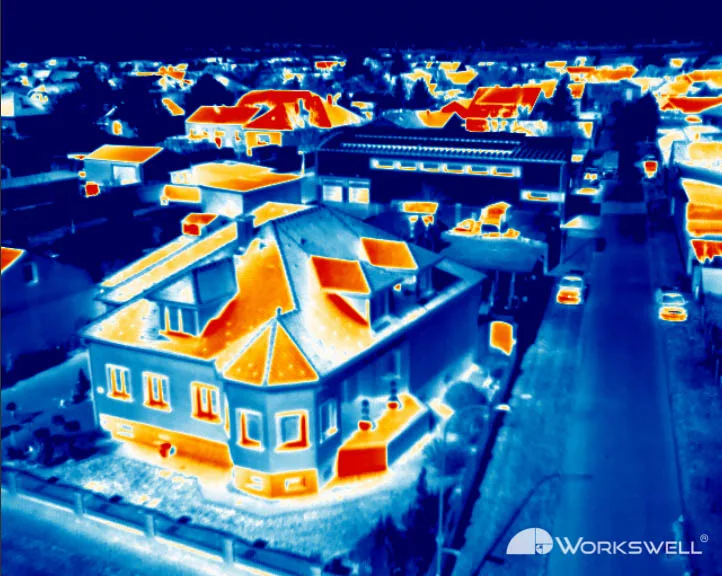
Conclusion
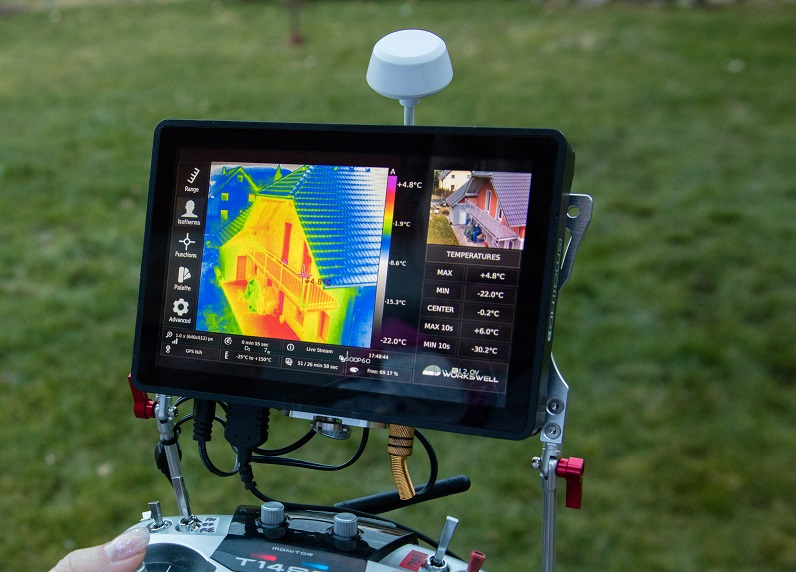
When it comes to verifying that construction work has been carried out and inspecting structures, nothing beats thermographic building diagnostic. If a thermal camera discovers issues in a building, the Workswell WIRIS report and its calibrated camera will give you a powerful piece of evidence on which to base your claim. It can be difficult to inspect the masonry of tall buildings, and roofs – where defects are the most common – are often out of reach for manual thermal cameras.
That’s why the Workswell WIRIS thermal camera was engineered for use with drones, which offer just as much accuracy as manual systems while delivering in hard-to-access environments. Since the system is calibrated its measurement results are conclusive.

